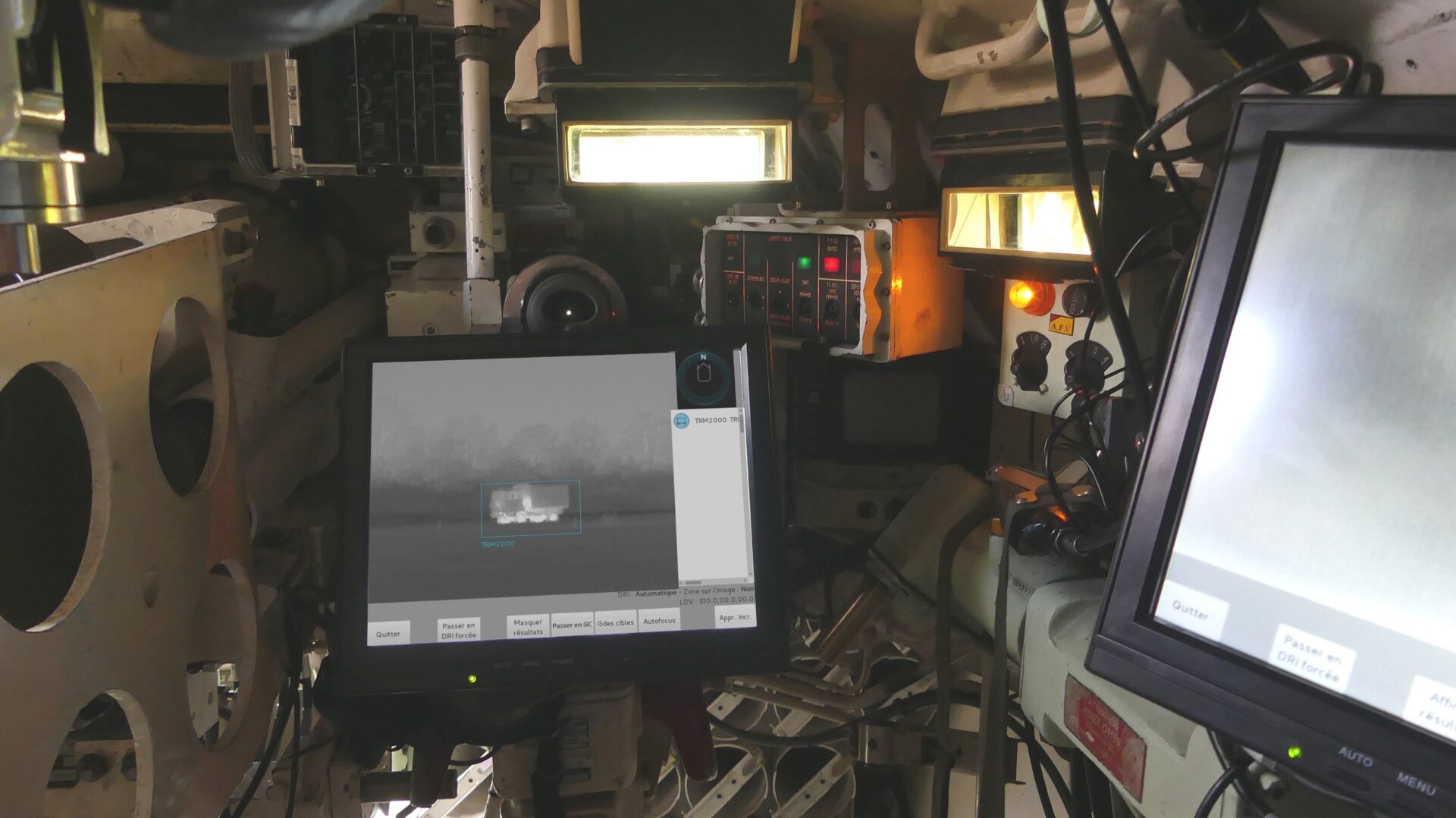European missile maker MBDA within the scope of an upstream study program of the French Directorate General for Armaments has developed a capacity for autonomy tracking threats and object acquisition by imagery using Artificial Intelligence (AI).
According to a recent company’s statement, this program, called the 2ACI, was trained using only computer-generated images before being integrated into an embedded system. It then demonstrated its effectiveness in detecting, recognizing, and identifying vehicles using infra-red imaging.
For example, an AI system can detect, track, and assess the threat from potential enemy combat vehicles on the battlefield.
As noted by the company, the 2ACI system with AI-informed algorithms can be applied to any tactical context, day or night, by poor weather conditions, whether the vehicles are fixed or mobile, single or multiple. This operator assistance meets a ground operational requirement, but can also be extended to naval or air contexts.
Through an ability to access a vast database complete with history, comparisons and a seemingly limitless sphere of interwoven variables, AI-empowered computer algorithms can increasingly perform these kinds of calculations.
Also noted that the work of this program has resulted in the production of two demonstrators. The first was installed on a heavy armoured vehicle and was evaluated in operational conditions on a DGA-Techniques Terrestres (DGA land techniques) test site. The second was delivered to DGA-Maîtrise de l’Information (DGA information management) for a laboratory evaluation.
Those demonstrators have proved the operational efficiency of the 2ACI function and that it could be integrated into due course to the French Army combat system Scorpion, as well as to the Medium-Range Missile/MMP firing unit.
This technology program has been conducted by MBDA together with the French start-up Kalray – a pioneer of processors for new intelligent systems.

The 2ACI function has been assessed in combat-like conditions, associated to the turret sights of a French Army AMX10RCR tank.
According to a recent company’s statement, this program, called the 2ACI, was trained using only computer-generated images before being integrated into an embedded system. It then demonstrated its effectiveness in detecting, recognizing, and identifying vehicles using infra-red imaging.
For example, an AI system can detect, track, and assess the threat from potential enemy combat vehicles on the battlefield.
As noted by the company, the 2ACI system with AI-informed algorithms can be applied to any tactical context, day or night, by poor weather conditions, whether the vehicles are fixed or mobile, single or multiple. This operator assistance meets a ground operational requirement, but can also be extended to naval or air contexts.
Through an ability to access a vast database complete with history, comparisons and a seemingly limitless sphere of interwoven variables, AI-empowered computer algorithms can increasingly perform these kinds of calculations.
Also noted that the work of this program has resulted in the production of two demonstrators. The first was installed on a heavy armoured vehicle and was evaluated in operational conditions on a DGA-Techniques Terrestres (DGA land techniques) test site. The second was delivered to DGA-Maîtrise de l’Information (DGA information management) for a laboratory evaluation.
Those demonstrators have proved the operational efficiency of the 2ACI function and that it could be integrated into due course to the French Army combat system Scorpion, as well as to the Medium-Range Missile/MMP firing unit.
This technology program has been conducted by MBDA together with the French start-up Kalray – a pioneer of processors for new intelligent systems.

The 2ACI function has been assessed in combat-like conditions, associated to the turret sights of a French Army AMX10RCR tank.

